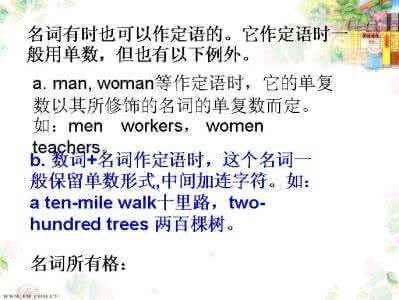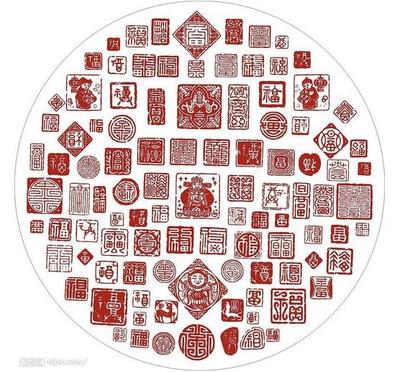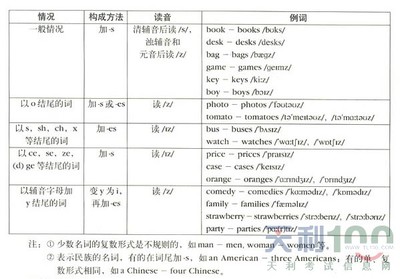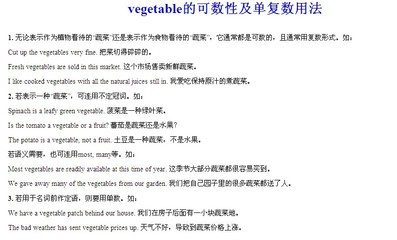—Sorry, I've no idea. Maybe they are having a meeting in _____ TV room.[ ]A. student's
B. students'
C. the student's
D. the students'题型:单选题难度:中档来源:同步题
D
考点:
考点名称:名词所有格名词所有格:表示有生命的东西的名词及某些表示时间、距离、星球、世界、国家等无生命的东西的名词,后加’s来表示所有关系。
名词所有格的构成:
①一般情况(包括单数名词和不带词尾s的复数名词)加’s
例如:the child’s bag 这个孩子的书包 children’s books 儿童用书
②带词尾s的复数名词只加省字撇(’)
例如:girls’ school 女子学校 the smiths’ car 史密斯家的小汽车
带词尾s的单数,通常仍加’s,如the boss’s new car
③带词尾s的人名,可加’s或只加省字撇(’)
例如:Dickens’ novels 狄更斯的小说 Charles’ job 查理斯的工作
不带词尾s,却以[s]结尾,一律加’s,如Marx’s 马克思的著作
④双重所有格:将’s与of 结合一起使用构成双重所有格。
例如:a friend of my father’s 我父亲的一位朋友
a photo of mine 我的一张照片
注意:
①用and连接的的并列名词的所有格要分两种情况,即表示各自的所有关系时,要分别在并列名词后加’s,表示共同的所有关系时,只在最后一个名词后加’s。
例:Tom’s and Jack’s room 汤姆和杰克(各自)的房间。
Tom and Jack’s room 汤姆和杰克(共同)的房间。
②下列情况可以将 ’s 所有格中的名词省略。
a名词所有格所修饰的词, 如果前面已经提到,往往可以省略,以免重复。
例 This notebook is not mine, nor John’s, nor Peter’s. 这个笔记本不是我的,也不是约翰和比特的。
The dictionary isn’t mine, but Jenny’s. 这本词典不是我的,而是珍妮的。
b名词所有格后面有指地点等的名词时, 有的在习惯上可以省略。
例 Before Christmas, there were lots of customers at the Richarsons’.
the doctor’s(office)医生的诊所
my uncle’s(house)我叔叔的家
-’s 所有格与of 所有格的用法比较:
(1) of 所有格既可用于有生命的人或物,也可用于无生命的东西。of 所有格有时可以与-’s 所有格互换。
如:Mr Smith’s son = the son of Mr Smith 史密斯先生的儿子
Jim’s patience = the patience of Jim 吉姆的耐心
the Queen’s arrival = the arrival of the Queen 女王的到达
(2) 必须用 ‘s 所有格的情形:
①表类别时:men’s shoes 男鞋,children’s stories 儿童故事
②表来源时:John’s telegram 约翰的电报
③当被修饰的名词后有同位语修饰时:
Mary’s husband, a policeman, has just been here. 玛丽的丈夫是个警察,刚刚来过这儿。
(3) 必须用of 所有格的情形:
①用于无生命的事物时:the subject of the sentence 句子主语
Times New Roman'; mso-ascii-font-family: 'Times New Roman'
②表同位关系时:the City of Beijing 北京市
③当中心词是名词化的名词时:the life of the poor 穷人的生活
④当of 所有格中的名词后跟有后置修饰语或同位语时:
of Mr Smith is a foreign teacher of a university in China. 史密斯先生是中国一所大学的外籍教师。
's所有格、of所有格和双重所有格三者之间的细微区别:
举例比较下面三句话:
1.She is Mary's brother's friend.
2.She is a friend of Mary's brother.
3.She is a friend of Mary's brother's.
1句用的是's所有格,侧重说明她和Mary的哥哥是朋友关系,突出friend一词。
2句用的是of所有格,侧重说明她和Mary的哥哥是朋友关系,强调突出了Mary's brother。
3句用的是双重所有格,侧重说明Mary哥哥的朋友不止是一个,她只是其中的一个。
名词在句中表示所有关系、所属关系、动作执行者及动作承受者等意义时常需用所有格形式。
名词所有格也称为属格、主格,它主要包括's所有格、of所有格和双重所有格三种表现形式。
一、's 所有格的用法
1.表示有生命的东西的名词末尾加's。例如:
Jim's bed
the man's wife
children's toys
the fox's tail
2.以-es或-s结尾的名词末尾加"'s"。例如:
the students' books
Teachers' Day
my boss' office
a girls' dormitory
3.有些表示时间、距离、度量衡、价值、自然现象、国家、城镇等无生命东西的名词,也可以加's构成所有格。例如:
today's newspaper five minutes'walk a ton's weight a dollar's worth of stamps the moon's rays
4.表示两者共同拥有的人或物(共有)时,只需要后一个名词加's(或')即可。如果表示两者各自的所属关系(各自所有),则每个名词词尾都加上's(或')。例如:
Joan and Jane's room(房间属二人共同所有)
Joan's and Jane's room(指Joan和Jane各自的房间)
5.'s所有格所修饰的词的省略现象
a、表示诊所、店铺或某人的家等地点名词,其名词所有格后的被修饰语常常省略。例如:
I met her at the doctor's(office).我在诊所遇见了她。
He has gone to the tailor's(shop).他到服装店去了。
She went to Mr.Black's(house)yesterday.她昨天到布莱克先生家去了。
b、名词所有格所修饰的词,如果前面已经提到过,往往可以省略,以免重复。例如:
Whose pen is this?It's Tom's.这是谁的钢笔?是汤姆的。
The bike is not mine,but Wang Pinpin's.这辆自行车不是我的,是王品品的。
二、of 所有格的用法
of 所有格由of 加名词构成,其用法归纳如下:
1.of所有格一般用于无生命的东西的名词中。例如:
a map of the world
the story of a hero
the windows of the room
the title of the film
2.用于名词化的词。例如:
the sticks of the blind 盲人的拐杖
3.修饰词较多时也可用of所有格。例如:
the very long and graceful tail of the black cat 黑猫的又长又美的尾巴
4.表示有生命的东西的名词,有时也可以用of所有格。例如:
the children of the family 那家的孩子们
某些of所有格和's所有格可以互换。
the son of a poor peasant=a poor peasant's son 一个贫农的儿子
但有时含义却不相同,请比较下面的例子:
an old woman's story(一个老妇人讲自己的身世)
the story of an old woman(别人讲一个老妇人的身世)
三、's所有格和of所有格可以表示下面的关系:
1.所有关系
the students'reading room 学生阅览室
2.主谓关系
the arrival of the train 火车的到达
3.动宾关系
the search of knowledge 知识的探究
4.同位关系
the name of Kate 凯特这个名字
四、双重所有格及其用法
's所有格和of所有格两种所有格形式结合在一起,构成"of+所有格"形式,即双重的所有格。
它通常表示部分观念,即全体中的一部分,在意义上与"one of..."相似,它主要修饰of短语之前的那个名词。
此外,双重所有格与指示代词连用时,常带有感情色彩,如赞赏、不满、厌恶等。它的主要形式如下:
1.名词+of+名词性物主代词。例如:
a good friend of mine 我的一个好朋友
an interesting story of his 他的有趣的经历
2.名词+of+'s所有格。例如:
He is a friend of my sister's.(=one of my sister's friends)他是我姐姐的一个朋友。
Look at that long nose of Jack's.看杰克的那个长鼻子。(感情色彩)
试比较:
a picture of Xiao Zhang 小张(本人)的照片
a picture of Xiao Zhang's 小张(具有的照片中)的一张照片
此外,不定冠词、数词、某些不定代词(some,any,many,no,few等)以及which等限定词,
一般不与形容词性物主代词或's所有格等一起放在名词前修饰名词,而采用of所有格或双重所有格形式。例如:
most of the students 学生中的大多数
three of them 他们中的三个人
I have read some books of his.我读过他的一些书。
Which book of Qiong Yao's have you read?你读过琼瑶的哪一本书? 考点名称:定冠词(the)
定冠词:
具有确定的意思,用以特指人或事物,表示名词所指的人或事物是同类中的特定的一个,以别于同类中其他的人或事物,或用在世界上“独一无二”的事物的名词前,相当于汉语中的“那个” 或“这个”的意思。它可以和单、复数名词,也可以和不可数的名词连用。
例如:The panda is one of the animals most in danger.
Italy is in the south of Europe.
The earth goes round the sun. .
基本用法:
1). 用以特指某(些)人或某(些)事物
This is the house where Luxun once lived.
这是鲁迅曾经住过的房子。
2). 用于指谈话双方都明确所指的人或事物
Open the door, please.
请把门打开。
3). 用以复述上文提过的人或事物(第一次提到用“a或an”,以后再次提到用“the”)
Once there lived a lion in the forest. Every day the lion asked small animals to
look for food for him.
从前森林里住着一只狮子。每天这只狮子要小动物们为他寻找食物。
4). 用在序数词和形容词和最高级前
January is the first month of the year.
一月份是一年当中的第一个月。
5). 表示世界上宇宙中独一无二的事物
the sun 太阳 the moon 月亮
6). 指由普通名词构成的专有名词
the West Lake 西湖 the Great Wall 长城
7). 表示方向、方位
in the east 在东方 in the west 在西方
8). 在海洋、江河、湖泊、山脉、海峡、海湾等地理名词前
the Pacific Ocean 太平洋 the Yellow River 黄河
9). 在姓氏复数前,表示一家人
The Bakers came to see me yesterday.
贝克一家人昨天来看我。
10). 和某些形容词连用,使形容词名词化,代表一类人或物
the poor 穷人 the rich 富人
11). 表示演奏乐器时,乐器的前面要加the
play the piano 弹钢琴
play the violin 拉小提琴
[中国乐器名词前不与冠词连用:play erhu(二胡)]
12).某些固定的表达法
in the morning 在早上 in the afternoon 在下午
in the evening 在晚上 go to the cinema 去看电影
关于定冠词The 的用法 :
1 表示特指的人或物
例:Please hand me the key on the desk. 请把桌上的钥匙递给我。
The girl in red is his sister. 穿红色衣服的女孩是他妹妹。
The building over there is the tallest in the town. 那边那幢大楼是这个城里最高的。
I like the music of the film. 我喜欢这部电影的音乐。
2 表示双方都知道的或心中明白的人或物
例:Shut the door, please. 请关门。
Has he returned the book? 那本书他还了吗?
Take the blue one, it is cheaper. 拿那个蓝的,它便宜些。
3 第二次提到某人或某物第一次提到时用不定冠词,第二次提到时要用定冠词。
例:He saw a house in the distance. Jim's parents lived in the house. 他看见远处有一所房子,吉姆的父母就住在那所房子里。
There was once an old fisherman. The old fisherman had a cat. The cat was white. 从前有一个老渔夫。这个老渔夫有一只猫。这只猫是只白猫。
4 用在世界上独一无二的名词前
这类词有:
the sun太阳, the earth地球, the moon月亮, the sky天空, the world 世界
例:The moon goes round the earth. 月亮绕着地球转。
There is not any cloud in the sky. 天空中没有一丝云彩。
It was a fine day in spring. The sun shone brightly. 这是一个晴朗的春日,阳光灿烂。
He is the richest man in the world. 他是世界上最富的人。
5 用在表示方向、方位的名词前
这类词有:
the east东方,the west西方,the south南方,the north北方,the right右边,the left左边
例:The birds are flying to the north. 这些鸟向北方飞去。
The moon rises in the east and sets in the west. 月亮从东方升起,在西方落下。
The wind was blowing from the south. 风从南方吹来。
She lived to the west of the Summer Palace. 她住在颐和园的西边。
Walk along the road and take the first turning on the right. 沿着这条路往前走,在第一个路口往右拐。
He stood at the back of the door. 他站在门背后。
提示 :
方位词成对使用构成平行结构时,不用定冠词。
例:The river is two thousand kilometers long from west to east. 这条河自西向2000公里长。
They traveled through the country from south to north. 他们自南向北在这个国家旅行。
6 用在形容词最高级前
例:Summer is the hottest season of the year. 夏天是一年中最炎热的季节。
She is the best person for the job. 她是最适合这个工作的人。
Hangzhou is one of the most beautiful cities in the world. 杭州是世界上最美的城市之一。
The car is the most expensive of the four. 这部车是四部车中最贵的。
7 用在序数词等前
定冠词用在序数词前,也用在表示序列的next, last等前,还有在表示“同一”或“唯一”等的词前。
例:The first man to land on the moon is an American. 第一个登上月球的人是美国人。
She was the fifth to climb to the top of the mountain. 她是第五个到达山顶的人。
This may be the last chance. 这可能是最后一次机会。
If I miss this train I'll catch the next one. 如果赶不上这趟火车,我就赶下一趟。
He is the only person who knows the secret. 他是唯一一个知道这个秘密的人。
The two coats are of the same colour. 这两件外衣颜色相同。
This is the very book I want. 这正是我要的书。(用very表示强调)
提示:
a 序数词表示“又一”时,前面用不定冠词a(an)
例:He bought a second pair of shoes. 他又买了一双鞋。
He asked a question, then a second, then a third…他问了一个问题,又问了第二个,第三个……
b 序数词用作状语或表语时,前面不加定冠词。
例:George arrived first. 乔治第一个到。
=George was the first person to arrive.
Jim and Jack are both second in the match. 汤姆和杰克在比赛中并列第二。
8 用在单数名词前表示一类人或物,强调整个类别
例:The orange is a kind of fruit. 橘子是一种水果。
The horse is a useful animal. 马是一种有用的动物。
The computer is important to us. 电脑对我们来说是重要的。
提示:
不定冠词+单数名词,不带冠词的复数名词也可表示一类人或物。
例:A car runs faster than a bus. 小汽车比公交车跑得快。
Cars run faster than buses.
A dog is a faithful animal. 狗是忠实的动物。
Dogs are faithful animals.
9 用在乐器名词前,表示演奏
例:She can play the piano. 她会弹钢琴。
He plays the violin very well. 他小提琴拉得很好。
He played the guitar for the children. 他给孩子们弹了吉他。
提示:
但乐器名词表示具体的器物,或表示课程时,不加the.
例:He bought a piano last month. 他上个月买了一架钢琴。
She taught piano in the school. 她在学校里教钢琴。
10 用在江河、海洋、湖泊、群岛、山脉的名称前例:
the Yangtze River 长江
the Red Sea 红海
the West Lake 西湖
the Pacific 太平洋the Himalayas 喜马拉雅山
the Nile 尼罗河
the Rocky Mountains 落基山脉
the South China Sea 南中国海
提示:
例外的情况: Mount Tai泰山 China Daily《中国日报》
11 用在由普通名词和另外一些词构成的国家名称、机关团体、阶级、等专有名词前
例:the Great Wall 长城
the United Nations 联合国
the New York Times 《纽约时报》
the United States of America 美国
the Red Cross Hospital 红十字医院the Olympic Games 奥林匹克运动会
the Shanghai Railway Station 上海火车站
the People's Republic of China 中华人民共和国
the North Pole 北极
the People's Daily 《人民日报》
12 用在某些形容词前,表示一类人或物或某种抽象概念
例:the old 老年人
the happy 幸福的人
the poor 穷人
the aged 老人
the sick 病人
the impossible 不可能的事the young 年轻人
the rich 富人
the blind 盲人
the wounded 伤员
the smooth 顺事
the beautiful 美,美的东西
例:The rich should help the poor. 富人应该帮助穷人。
The good is what people like. 人们总是喜欢美好的东西。
The wounded have been sent to the hospital. 伤员已经被送到医院去了。
13 用在姓氏的复数形式前,表示全家人或这一姓的夫妇二人
例:The Greens will more to the country. 格林一家要搬到乡下去。
The Wangs came to see us yesterday. 王家一家人昨天来看我们。
The Browns are very friendly. 布朗夫妇都很友好。
14 用在表示计算单位的名词前,含有“每,每一”的意思
例:Jim is paid by the hour. 吉姆的工资按小时付。
Eggs are sold by the kilogram. 鸡蛋按千克出售。
This cloth is sold by the yard. 这种布按码出售。
It sells at three dollars the pound. 它以每磅三美元出售。
They sell sugar by the pound. 他们按磅卖糖。
15 用在前面已提到过的人的身体部位或衣着的名词前
这种用法是先把整个对象说出来,然后再说到那个对象的身体的局部或衣着。
结构:动词(hit, pull, pat, strike, catch, hold, take)+sb.+介词(in, on, by, across)+身体部位或衣着
例:She touched him on the shoulder. 她碰了碰他的肩。
He took the girl by the hand. 他拉着小女孩的手。
He hit her on the nose. 他打了她的鼻子。
The stone struck the man in the eye. 石头击中了那人的眼睛。
I caught her by the right hand. 我抓住她的右手。
比较:她拍了拍那男孩的头。
She patted the boy on his head. (误,本结构中身体部位或衣着前不用one's)
She patted the boy on the head. (正)
16 用在逢十的复数数词前,表示年代,也指人的大约岁数
例:The war broke out in the forties. 那场战争发生在40年代。
He went abroad in the 1980s. 他在20世纪80年代出国的。
The old man is in the seventies. 老人大约七十几岁。
17 用在表示自然现象的名词前
这类名词有:
the rain 雨,the wind风, the fog雾,the snow雪, the air空气, the storm风暴,the snowstorm 暴风雪
例:Don't stand in the rain. 不要站在雨中。
The wind blew down the trees. 风把树刮倒了。
The ship sank in the storm. 船在风暴中沉没了。
The rain has cleaned the air. 下雨净洁了空气。
The fog was so thick that we couldn't see the top of the hill. 雾很大,我们看不见山顶。
提示
a 这类名词前有形容词修饰时,可用不定冠词,表示“一场,一阵,一种”
例:A cold wind is blowing from the north. 冷风从北方吹来。
There was a heavy rain last night. 昨晚下了一场大雨。
A heavy snow is falling outside. 外面正下着大雪。
b 这类名词表示一般物质时,不用冠词。
例:Rain falls in summer; snow falls in winter. 夏天下雨,冬天下雪。
Man can't live without air. 没有空气人不能活。
18 与复数名词连用,指整个群体
例: They are the teachers of this school.指全体教师)
They are teachers of this school.(指部分教师)

19 表示所有,相当于物主代词,用在表示身体部位的名词前
She caught me by the arm…… 她抓住了我的手臂。
20 用在某些习惯用语中
例:
in the morning 在上午
in the evening 在晚上
in the field 在田野里
in the country 在乡间
in the sun 在阳光下
in the distance 在远处
on the right 在右边
by the way 顺便说一下
in the front of 在前部
in the daytime 白天
go to the concert 去听音乐会
at (/in) the beginning 开始
at the moment 当时,此刻
all the year round 一年到头
go to the cinema 去看电影
go to the theatre 去看戏
at the weekend 周末in the afternoon 在下午
in the night 在夜里
in the sky 在空中
in the dark 在暗处
in the rain 在雨中
in the shade 在阴凉处
on the left 在左边
all the time 始终
in the middle of 在中间
on the way home 回家途中
all the same 依然
on the whole 总之
at the same time 同时
on the plane 在飞机上
in the year 2008 在2008年
the other day 前几天
at the bottom of 在……底部
in the end 终于
on the one hand, on the other hand 一方面,另一方面
提示:
下面几个短语前不加定冠词:
例:at dawn 在黎明
at night 在晚上
at noon 在正午
at dusk 在黄昏
the的固定用法:
一、在表示方位和方向的名词前面,一般要加the。如:
The sun rises in the east and sets in the west.
二、在乐器名称前面要加the。如:play the piano。
三、在形容词最高级或序数词之前一定要加the。如:the first,the best,等等。
四、表示全体总称(泛指)。
名词或者形容词前加the,可表示该事物的全体,如:the poor指“穷人”。
这一用法本身并不难,难在这一全体所表示的“数”上。
在一开始所举的例子中,the lion指的就是这“一”类,表示的是单数的概念。
但在下面这个例子中,the old又用单形表示了复数概念。
The old are apt to catch cold.
五、另外,定冠词the在固定词组中出现,需要多加注意,逐渐积累。
如:to tell the truth, to go to the theatre, to keep the peace, with the exception of, in the morning……
定冠词用法顺口溜:
特指双熟悉,上文已提及;
世上独无二,序数最高级;
某些专有名,习语及乐器。
注:定冠词常用于以下几种情况:
①“特指”某个或某些人或物前。例如:
The books on the desk are mine.书桌上的书是我的。
“双熟悉”指谈话双方都熟悉的人或事物前。例如:
Where is the teacher?老师在哪里?
②上文已经提到的人或事物前。例如:
I can see a cat.The cat is Lucy's.我能看见一只猫。那只猫是露茜的。
③世界上独一无二的事物前。例如:
The earth goes around the sun.地球围绕太阳转。
④序数词或形容词最高级前。例如:
September is the ninth month of the year.九月是一年中的第九个月。
Mike is the tallest of the three boys.迈克是三个男孩中最高的一个。
⑤由普通名词构成的专有名词前。例如:
the Great Wall(长城),
the People's Park(人民公园)等。
⑥一些习惯用语中或乐器前。例如:
in the day(在白天),
play the piano(弹钢琴)等。
不用冠词的几种情况:
下列情况应免冠,代词限定名词前;
专有名词不可数,学科球类三餐饭;
复数名词表泛指,两节星期月份前;
颜色语种和国名,称呼习语及头衔。
注:
①名词前已有作定语用的this,that,these,those,my,your,his,her,our,their,some等限定词。例如:
this eraser,her pencil-box,some boxes,these women等。
②泛指的不可数名词前一般不用冠词。例如:
meat,rice,water,bread,tea,milk,juice等。
③表示学科的名词前一般不用冠词。例如:
Chinese,maths,English,physics,history等。
④在三餐饭和球类运动前一般不用冠词。例如:
have breakfast/lunch/supper,play basketball/football/volleyball/table tennis/tennis/pingpong等。
⑤复数名词表示泛指时不用冠词。例如:
His parents are both workers.他父母都是工人。
The people in the room are doctors.房间里那些人是医生。
⑥季节、节日、星期、月份前不用冠词。例如:
autumn,winter,Teachers' Day,Children's Day,Sunday,Wednesday,February,October等。
⑦表示颜色、语种和国家的名词前不用冠词。例如:
white,brown,French(法语),Japanese(日语),Australia,America(美国)等。
⑧表示称呼语的名词之前以及职务、头衔的名词后也跟有名词时不用冠词。例如:
What's wrong,Granny?老奶奶,怎么啦?
Doctor Green is a scientist.格林博士是位科学家。
 爱华网
爱华网



